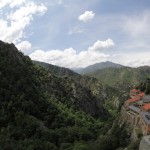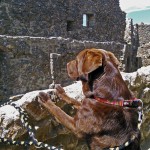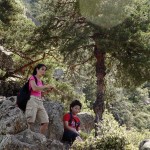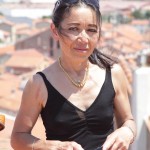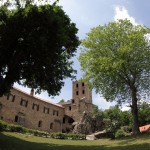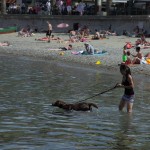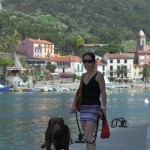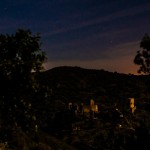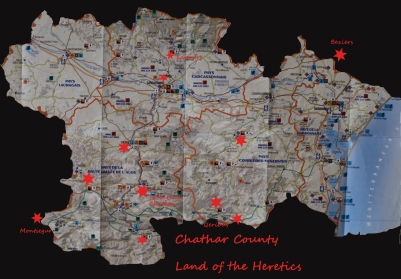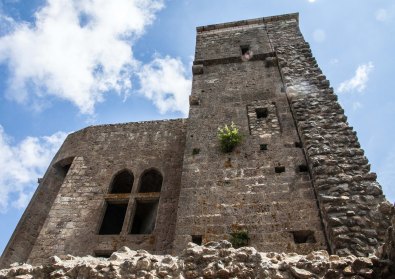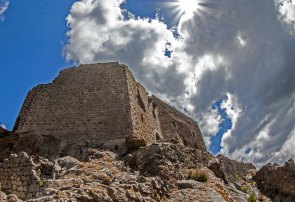This year we traveled for three weeks in Languedoc-Roussillon, where we followed the footsteps of the Templars and the heretic Cathars. In Languedoc-Roussillon Cathar castles and Templar remains, Abbeys and Châteaus are inspired by powerful myths , major mysteries, complex religious history, symbols of psychological relevance and – also significant pseudo-history. There a lots of stories about the Crusades and the mysteries of Sacred France in regards to Jesus, Mary Magdalene connected to it. Or, as in the cases of Rennes-le-Château, downright fabrications and conspiracy theories. So my journey became a transformational journey visiting places with magic and mysticism in addition to hiking, camping and photographing. If you want read about the history and mystic side of this land of heretics and Mary Magdalene read here.
My American wife, recently very pro-French again (wine and food) proposed the very south-west of France to improve my son’s French, she said. It is a long but doable drive, meaning that our Labrador – a good hiker – could accompany us. I tought there could be something in for me too: visiting the remains of Gnosticism and Templars. At some point the journey almost brought back 1971, when I travelled with two friends extensively in the Middle East, in particular Lebanon and Syria. One drives through a harsh, sometimes nearly unpopulated rural area , ruled by medieval castles which you can visit in smoldering heat, often by yourself. Languedoc-Roussillon and especially the department Aude has been like Syria always cultural fertile and diverse with all its violent consequences. Through Templars and the crusadesthose geographic and cultural regions are even themselves interconnected. The 11th century was the century of monks and knights, but also of a second wave of religious disputes like in the first two centuries, the century of heretics. While waves of Crusaders were fighting in Palestine, the common people of Europe were experiencing a crisis of faith. The Cathars, who lead an austere lifestyle, flourished in Aude and Herault at the foothills of the Pyrenees. My thoughts about them in the context of the Templars here.
Rennes-le-Chateau, is located near Couiza between Carcassonne and Quillan, has become world-famous ever allegedly since its infamous priest Bérenger Saunière discovered – or was given – a small fortune. About 300 books were written where the money came from, arguable and convincingly rebuked by Bill Puttnam as distorted pseudo-history. Bérenger Saunière built a house and called it Villa Bethania. That he named the house like this is the nearest thing to any mysterious religious knowledge he might have had, for then the Church believed that Mary at Bethany and Mary Magdalene were different people. But Bérenger Saunière didn’t. He built a “folly” and called it the Tour Magdala. There he would study and read.
Back to the Church of Mary Magdalene in Rennes-le-Chateau. The inscription at the portal is most startling (at the left with permission from www.marymagdalenebooks.com). The decor may seem somewhat superficial in any Catholic church at any time and place, but a closer look reveals strangely disturbing – and perhaps even pagan – dark imager and symbols that should unsettle Christians , including a hideous grimacing plaster demon crouched just inside the door, and had the words ‘This Is A Terrible Place’ inscribed over the porch, clearly a gnostic view.
I might return to the subject and the location.
The church is dedicated to Mary Magdalene, and some people think that the priest’s great treasure was spiritual – the knowledge that Mary Magdalene and Jesus were married and had founded a bloodline, great knowledge which would destroy the Church’s concepts of virginity being related to godliness. There is no doubt that the priest loved Mary Magdalene. He restored his church lovingly and spent a large sum on it between 1886 and 1897 of unknown origin.
Inside the church is a statue of Mary Magdalene and she appears much more often than usual in a catholic church. It is standard iconography that Mary holds a crucifix (the crucifix was not used as an emblem until the 9th century) and her jar of ointment. At her feet is a skull resting on a book; this signifies her meditations on mortality.

